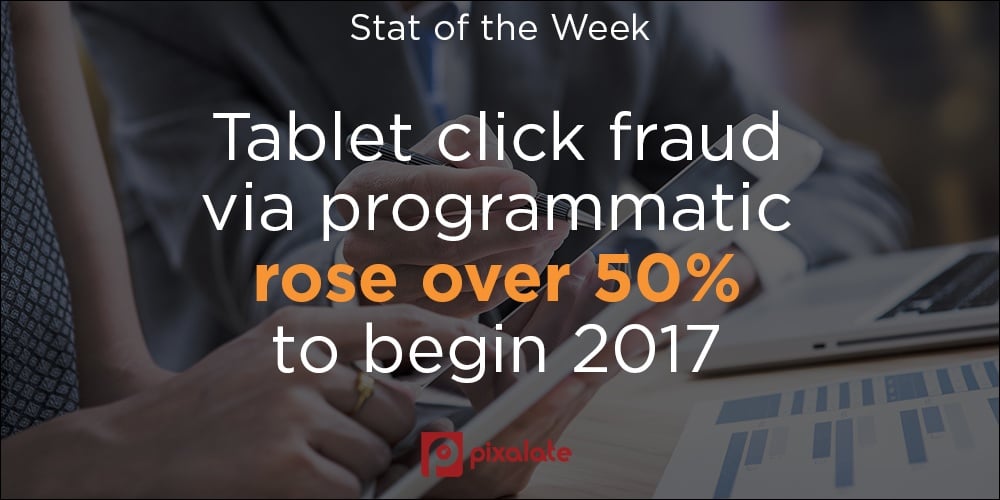
This week's review of ad fraud and quality in the digital advertising space.
Click the Stat of the Week for more information.

ExchangeWire spells out the ways in which marketers can work with accountable sell-side ad tech partners to improve transparency in digital media. The article says marketers should look for full access to insights and data and work with partners who have a transparent business model. Check out Pixalate's full list of the programmatic sellers who have the best overall quality.

The two big spenders are "putting their money where their mouths are," per Business Insider. "Both P&G and Unilever appear to have pulled back on their digital spending, materially reducing their budgets as well as the number of sites they buy on," wrote Business Insider. Both companies have been vocal about the need to improve transparency and quality in programmatic.

According to Advertising Age, WPP was the target of a ransomware attack in which hackers and fraudsters attempted to steal money. The motive behind this attack appears to be money related (Bitcoin), but experts say the surface-level motive is sometimes a smokescreen for a larger play by the fraudsters. Advertising Age says WPP client data appears to be safe.

Freewheel says OTT devices surpassed desktop as the primary device for premium video consumption, according to an interview with Beet.TV published on the Huffington Post. Be sure to check out how Pixalate defines OTT, and make sure you are aware of the high levels of fraudulent activity in the space.

Business Insider identified six "suspect traffic vendors" that are fueling the online ad crises. To see a comprehensive list of seller quality in the programmatic media marketplace across devices and channels, download Pixalate's Seller Trust Indexes.
Sign up for our blog to stay updated with new stats, trends, and analysis on digital ad fraud.
*By entering your email address and clicking Subscribe, you are agreeing to our Terms of Use and Privacy Policy.
These Stories on Weekly Recaps
*By entering your email address and clicking Subscribe, you are agreeing to our Terms of Use and Privacy Policy.

Disclaimer: The content of this page reflects Pixalate’s opinions with respect to the factors that Pixalate believes can be useful to the digital media industry. Any proprietary data shared is grounded in Pixalate’s proprietary technology and analytics, which Pixalate is continuously evaluating and updating. Any references to outside sources should not be construed as endorsements. Pixalate’s opinions are just that - opinion, not facts or guarantees.
Per the MRC, “'Fraud' is not intended to represent fraud as defined in various laws, statutes and ordinances or as conventionally used in U.S. Court or other legal proceedings, but rather a custom definition strictly for advertising measurement purposes. Also per the MRC, “‘Invalid Traffic’ is defined generally as traffic that does not meet certain ad serving quality or completeness criteria, or otherwise does not represent legitimate ad traffic that should be included in measurement counts. Among the reasons why ad traffic may be deemed invalid is it is a result of non-human traffic (spiders, bots, etc.), or activity designed to produce fraudulent traffic.”

